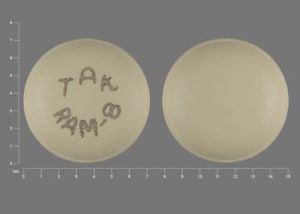What is Rozerem?
Rozerem is a hypnotic (sleep) medicine. Rozerem is used in adults for the treatment of the symptom of trouble falling asleep from insomnia.
Rozerem is not for children.
What is the most important information I should know about Rozerem?
Rozerem may cause severe allergic reactions. Symptoms include swelling of the tongue or throat, trouble breathing, and nausea and vomiting. Get emergency medical help if you get these symptoms after taking Rozerem.
After taking Rozerem, you may get up out of bed while not being fully awake and do an activity that you do not know you are doing. The next morning, you may not remember that you did anything during the night. You have a higher chance for doing these activities if you drink alcohol or take other medicines that make you sleepy with Rozerem. Activities may include:
- driving a car ("sleep-driving")
- making and eating food
- talking on the phone
- having sex
- sleep-walking
Call your doctor right away if you find out that you have done any of the above activities after taking Rozerem.
Important:
- Take Rozerem exactly as prescribed
- Do not take more Rozerem than prescribed.
- Take Rozerem within 30 minutes of going to bed, not sooner.
- Do not take Rozerem if you:
- drink alcohol
- take other medicines that can make you sleepy. Talk to your doctor about all of your medicines. Your doctor will tell you if you can take Rozerem with your other medicines
- cannot get a full night's sleep
Who should not take Rozerem?
Do not take Rozerem if you are allergic to anything in it. See the end of this Medication Guide for a complete list of ingredients in Rozerem.
Do not take Rozerem if you are currently taking Luvox (fluvoxamine).
What should I tell my healthcare provider before taking Rozerem?
Rozerem may not be right for you. Before starting Rozerem, tell your doctor about all of your health conditions, including if you:
- have a history of depression, mental illness, or suicidal thoughts
- have liver disease
- have a lung disease or breathing problems
- are pregnant, or planning to become pregnant
- are breastfeeding or plan to breastfeed. Rozerem may cause somnolence in a breastfed infant. You may consider interrupting breastfeeding and pumping and discarding breastmilk during treatment and for 25 hours after administration of Rozerem.
Tell your doctor about all of the medicines you take including prescription and nonprescription medicines, vitamins and herbal supplements. Medicines can interact with each other, sometimes causing serious side effects.
Do not take Rozerem with:
- other medicines that can make you sleepy
- Luvox (fluvoxamine)
Know the medicines you take. Keep a list of your medicines with you to show your doctor and pharmacist each time you get a new medicine.
How should I take Rozerem?
- Take Rozerem exactly as prescribed. Do not take more Rozerem than prescribed for you.
- Do not break the tablets. They should be swallowed whole.
- Take Rozerem within 30 minutes of going to bed. After taking Rozerem only do activities to get ready for bed.
- Do not take Rozerem with or right after a meal.
- Do not take Rozerem unless you are able to get a full night's sleep before you must be active again.
- Call your doctor if your insomnia worsens or is not better within 7 to 10 days. This may mean that there is another condition causing your sleep problems.
- If you take too much Rozerem or overdose, call your doctor or poison control center right away, or get emergency treatment.
What are the possible side effects of Rozerem?
Possible serious side effects of Rozerem include:
- severe allergic reactions. Symptoms include swelling of the tongue or throat, trouble breathing, and nausea and vomiting. Get emergency medical help if you get these symptoms after taking Rozerem.
- getting out of bed while not being fully awake and do an activity that you do not know you are doing. (See "What is the most important information I should know about Rozerem?")
- abnormal thoughts and behavior. Symptoms include worsening of depression, suicidal thoughts or actions, nightmares, and hallucinations.
- hormone effects. Rozerem can decrease testosterone levels and increase prolactin levels in the blood. Symptoms of low testosterone or high prolactin levels are:
- decreased interest in sex
- problems getting pregnant
- irregular menstrual periods or no menstrual periods
- leakage of milk from the nipples of a person who is not breastfeeding
Call your doctor right away if you have any of the above side effects or any other side effects that worry you while using Rozerem. Call your doctor for medical advice about side effects. You may report side effects to the FDA at 1-800-FDA-1088.
The most common side effects of Rozerem are:
- drowsiness
- tiredness
- dizziness
- You may still feel drowsy the next day after taking Rozerem. Do not drive or do other dangerous activities after taking Rozerem until you feel fully awake.
These are not all the side effects of Rozerem. Ask your doctor or pharmacist for more information.
Rozerem Images
General information about the safe and effective use of Rozerem
- Medicines are sometimes prescribed for purposes other than those listed in a Medication Guide.
- Do not use Rozerem for a condition for which it was not prescribed.
- Do not share Rozerem with other people, even if you think they have the same symptoms that you have. It may harm them.
This Medication Guide summarizes the most important information about Rozerem. If you would like more information, talk with your doctor. You can ask your doctor or pharmacist for information about Rozerem that is written for healthcare professionals. For more information about Rozerem, please call Takeda Pharmaceuticals at 1-877-TAKEDA-7 (1-877-825-3327) or visit www.Rozerem.com.
How should I store Rozerem?
- Store Rozerem tablets at room temperature, 59° to 86° F (15° to 30°C). Keep the container tightly closed and protected from moisture and humidity.
- Keep Rozerem and all medicines out of reach of children.
What are the ingredients in Rozerem?
Active Ingredient: ramelteon
Inactive Ingredients: lactose monohydrate, starch, hydroxypropyl cellulose, magnesium stearate, hypromellose, copovidone, titanium dioxide, yellow ferric oxide, polyethylene glycol 8000, and ink containing shellac and synthetic iron oxide black.






